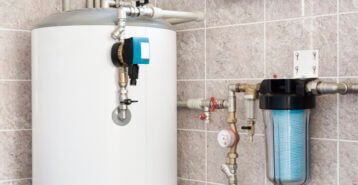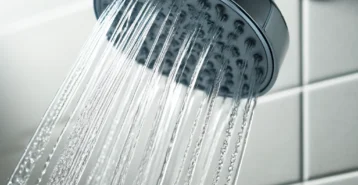Are you doing a home improvement project?
Modernize can pair you with three to four pros in your area, so you can compare options and save time and money.
- Amortization
- Annual Percentage Rate (APR)
- Cash-Out Refinance
- The Consumer Financial Protection Bureau
- Closing Costs
- Credit Score
- Credit Report
- Dodd-Frank Wall Street Reform and Consumer Protection Act
- ENERGY STAR Program
- Escrow
- Equity
- Home Energy Renovation Opportunity (HERO) Program
- Home Energy Score
- Home Equity Line of Credit
- Home Equity Loan
- HomeStyle Energy Program
- Property Assessed Clean Energy (PACE) Model
- Private Mortgage Insurance
- Preapproval Or Pre-Qualification
- Purchasing Power
- Residential Property Assessed Clean Energy (R-PACE) Model
- Residential Renewable Energy Tax Credit
- Title I Property Improvement Loans
Welcome to the Modernize glossary of terms for anyone in the process of, or considering a home improvement project. It’s always advisable to discuss and check with your local contractor how various financing options and programs might affect your project but our guide is here to help familiarize you with some common terms you might encounter along the way. Bookmark this page and advise it whenever you are considering the next step of your project or signing paperwork that will inevitably include some of the terms below.
Modernize regularly updates this list so check back for new information.
Amortization
This term applies to the different allocation of loan repayment, wherein a portion of each mortgage payment, for example, pays partially for the comprehensive loan balance and partially pays for the accrued interest.
Annual Percentage Rate (APR)
When homeowners (or anyone, for that matters) finances a home improvement project (or anything, for that matter), the interest rate on their loan can be viewed in a yearly way, otherwise known as the annual percentage rate. A loan’s APR is a good measure by which to determine the cost of that loan over any given year but also over its entire lifetime. Homeowners can, therefore, calculate what it will mean to their budget to take out any given loan.
Cash-Out Refinance
Put simply, this type of refinancing replaces an existing mortgage with one worth more and the difference is immediately paid out in cash to the homeowner refinancing. Of course, then the homeowner owes than they did to begin with and carry the associated risks of increased debt. This type of refinancing requires built-up equity in a home before it can be used.
The Consumer Financial Protection Bureau
In its own language, the CFPB is a US government agency designed to “makes sure banks, lenders, and other financial companies treat you fairly.” From answering people’s questions about personal finance to acting as a repository for complaints about unsavory practices, the CFPB is a great resource for any homeowner considering financing anything, but especially when it comes to large-scale investments in long-term projects like home improvement. The agency was erected as a result of the passing of the Dodd-Frank Wall Street Reform and Consumer Protection Act.
Learn more at consumerfinance.gov.
Closing Costs
Commonly known as settlement costs, these refer to the cost of securing a mortgage — closing the deal. According to finance site lendingtree.com, common items include
- Title insurance
- Escrow fees
- Lender charges
- Real estate commissions
- Transfer taxes
- Recording fees
Credit Score
Plainly put, a credit score helps companies—like lending institutions—predict how likely you are to pay back a loan and to do so on time. Some common data used to determine your credit score, according to the Consumer Financial Protection Bureau, are:
- Your bill-paying history
- Your current unpaid debt
- The number and type of loan accounts you have
- How long you have had your loan accounts open
- How much of your available credit you are using
- New applications for credit
- Whether you have had a debt sent to collection, a foreclosure, or a bankruptcy, and how long ago
Credit Report
Used to determine credit scores and other profiles of financial viability, a credit report is essentially a statement with information about a person’s credit activity, from paying back loans to how many of those exist in the first place. These reports, according to the Consumer Financial Protection Bureau, often include:
- Personal information like a social security number and current and former addresses
- Credit accounts like mortgages, account payment histories, and credit limits
- Items in collection
- Public records like liens or foreclosures
- Inquiries showing when and how other companies have accessed a credit report previously
Dodd-Frank Wall Street Reform and Consumer Protection Act
Commonly known as Dodd-Frank, this 2010 law is named after its original sponsors, Senator Christopher Dodd and US Representative Barney Frank. Largely aimed at banks, the law serves to protect consumers from predatory lending and financing programs. One result of the law was the creation of the Consumer Financial Protection Bureau.
ENERGY STAR Program
This volunteer-based resource from the Environmental Protection Agency is designed to help homeowners save money on home improvement projects, as well as other endeavors, that aid in protecting the climate.
Learn more at energystar.gov.
Escrow
When money is being handed off between two parties like a contractor and a homeowner, for example, or a buyer or seller, escrow is often utilized. It is a third party that is not part of the transaction and who is, therefore, able to hold on to security funds until the process of the transaction is complete.
Equity
Simply put, this is the calculated difference between what a homeowner owes on their home or property and the appraised (or market) value determined for it. The more of a loan a homeowner pays, the higher that homeowner’s equity in the given property.
Find the Right Contractor for Your Project
Whether you’re ready to begin your project now or need some expert advice, our network of contractors are here to help. With a few simple questions, we’ll find the best local professionals for you
Home Energy Renovation Opportunity (HERO) Program
Part of the Property Assessed Clean Energy (PACE) Model, the HERO Program provides financing for energy-efficient, water-efficient, and renewable energy products in California and Missouri. Local municipal governments collect annual property taxes to pay for the loan program.
Home Energy Score
This Department of Energy-developed program helps homeowners seeking to improve their property’s or home’s energy costs or efficiencies with “directly comparable and credible information about a home’s energy use.” In other words, the program can help a homeowner compare apples-to-apples the worthiness of a product or service as it regards that homeowner’s energy use.
Learn more at betterbuildingssolutioncenter.energy.gov
Home Equity Line of Credit
A home equity line of credit, otherwise known as a HELOC, allows homeowners to borrow money against their home’s equity. HELOCs are generally flexible but limited by a home’s value, and they also carry the risk of foreclosure.
Home Equity Loan
In contrast to a home equity line of credit (or a HELOC), this loan allows a homeowner to borrow money against the value of a home over the amount of any or all mortgages levied against the property. Since the home itself is the security for the loan, it can result in large amounts of borrowed assets. For all intents and purposes, a home equity loan is a kind of second mortgage.
HomeStyle Energy Program
This program from loan provider Fannie Mae lets borrowers get loans valued at up to 15% of their home’s appraised value to finance “energy-efficient upgrades when purchasing or refinancing a home,” according to the Department of Energy.
Property Assessed Clean Energy (PACE) Model
PACE programs are mechanisms by which private property owners (or homeowners) can more easily finance energy-efficient and renewable energy improvements on their property and using private sources of income. Local municipal governments collect annual property taxes to pay for the loan program.
Private Mortgage Insurance
Commonly known as PMI, this insurance protects a lender against a possible default by a borrower. Borrowers in many cases are forced to pay for PMI when a lender deems the given loan as risky enough to merit it.
Preapproval Or Pre-Qualification
Given basic information about a homeowner, for example, a lender might determine that person to be appropriate for a loan. No actual paperwork or fact-checking has been done but a bank, as an example of a lender, is tentatively interested in lending that homeowner money.
Purchasing Power
When it comes to individuals, purchasing power refers to the financial ability to buy (or purchase) goods or services. While it’s tied to elements like inflation and market values, home equity and savings are crucial markers of purchasing power when it comes to homeowners—especially if they are seeking to finance a home improvement project.
Residential Property Assessed Clean Energy (R-PACE) Model
As distinguished from the commercial PACE programs, these are designed specifically for residential homeowners, yielding different allowances and results.
Residential Renewable Energy Tax Credit
This financial assistance in the form of tax credit applies to up to 30 percent of a renewable energy installation, a solar paneling system, for example. It is important to note that this federal credit is for systems placed in service by Dec. 31, 2019.
Title I Property Improvement Loans
The federal government’s Department of Housing and Urban Development (HUD) helps insure private lenders against losses they might incur from loans they provide for property improvement. This insurance applies to “both large and small improvements,” according to HUD.
Learn more at hud.gov/program_offices/housing/sfh/title/ti_about.
Modernize’s content is intended for informational use only. We make no representations to the accuracy, completeness, correctness, suitability, or validity of any information on this site, and will not be liable for any errors, omissions, or delays in this information or any losses, injuries, or damages arising from its display or use. All information is provided on an as-is basis. It is the reader’s responsibility to verify their own facts. By using our website, you are accepting the practices described in this Privacy Policy. Please review our Terms of Service for more.
Find the Right Contractor for Your Project
Whether you’re ready to begin your project now or need some expert advice, our network of contractors are here to help. With a few simple questions, we’ll find the best local professionals for you
Reviews from Real Homeowners
Welcome to Homeowner Resources! We are the Modernize blog. Modernize pairs more than 3 million homeowners a year with pre-vetted contractors in their area. This blog started because we believe homeowners should know everything about their homes, from how their HVAC works to which front door colors they might love. On Homeowner Resources, you can find information on every part of your home, right down to how you can negotiate with contractors to get the best price. Here's more about the blog.
Need a contractor? Learn more about how Modernize finds the right pro for you.




